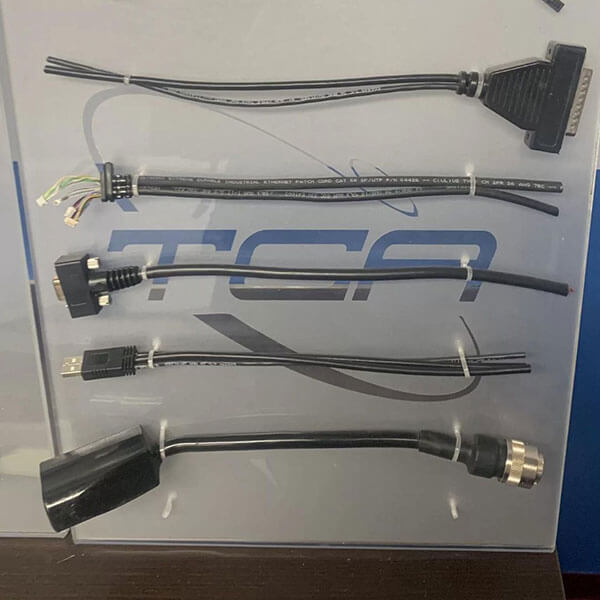Cable molding is used for all sorts of power and data transmission cables, and is more prevalent than the average consumer might realize. For instance, many consumer grade HDMI and USB cables have basic molding included to provide protection during connection and disconnection.
If molding is so commonplace nowadays, one might ask, then why are we writing about it? To put it simply, there are a great number of styles of cable molding that differ a lot from each other in terms of usage, and the manufacturing process. The basic molding you’ll find on many consumer grade cables is not sufficient for all applications so overmolded, industrial strength and custom molded cables are needed in many instances. We’ll describe the general molding manufacturing process that we use, and how we customize cable molding for customers based on their requirements and needs here.
Cable Molding Manufacturing
The simplest explanation of how cable molding is made, is that pressure is used to force material into a mold cavity or what we typically call a “die”, with the desired shape the final mold needs to be. Molding machines automate and simplify this process. We use MoldMan thermoplastic machines to overmold cables by the thousands at Technical Cable Applications. We use special thermoplastic material, such as the polyamide Macromelt OM 646, and heat it to up to 475 degrees Fahrenheit depending on what the final molding needs. Our MoldMan machines allow us to time the injection and clamping processes perfectly with up to 2 tons of force!
Custom Cable Molding
If a customer comes to us with a need for their cables to be molded with a custom raceway solution, we’ll identify 3 main things:
What is the application for the cable? Usually we have a cable drawing from the customer but oftentimes additional information is needed to ensure that the molding will be right for the client’s needs and survive the environmental hazards it will be put through.
Do we need to have multiple configurations of molding or just one, and do they have custom dies already or will we need to produce some? Custom molding dies can be created with multiple shapes and configurations, so that we can quickly manufacture multiple different mold shapes. This is helpful when the client needs a few different types of molding, but unnecessary if they just need one type of mold.
What material is best? The most common one we use because of its versatility is the aforementioned Macromelt OM 646. It has a hardness rating of 92A and a very wide range of service temperatures so it is more than sufficient for many applications. However, if a softer or firmer hardness is needed or if the environment where the cables will be utilized is over 257 degrees Fahrenheit, there are many other options for polyamides that will do the job.
Our technicians are extremely knowledgeable about cable molding, and we utilize automated work instruction tools to ensure that every step of the manufacturing process of cables is done properly. You can trust our team with your bulk cable order from prototyping to final production, just send us your cable drawing to get started!
